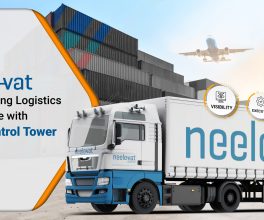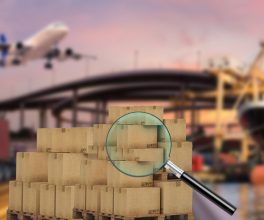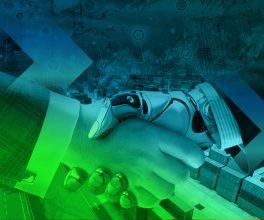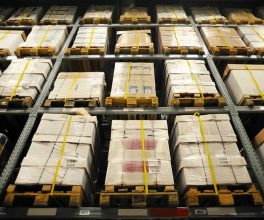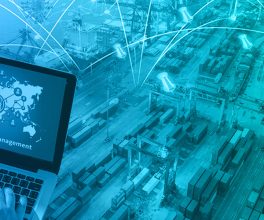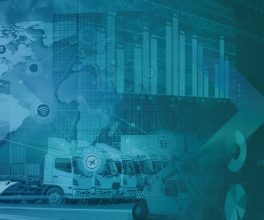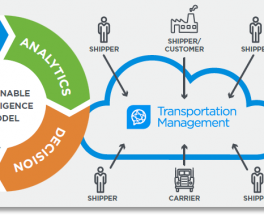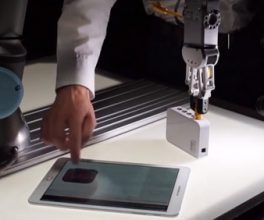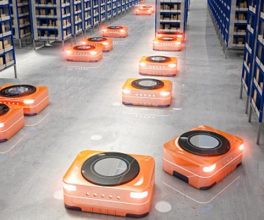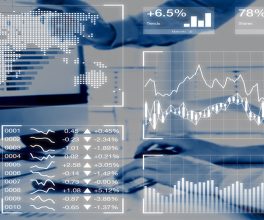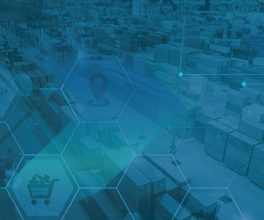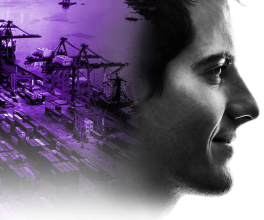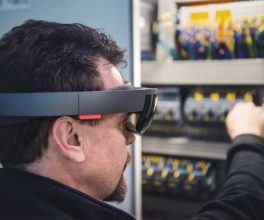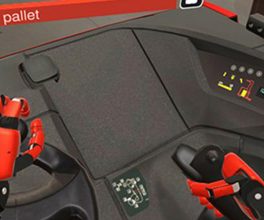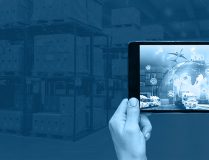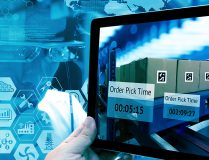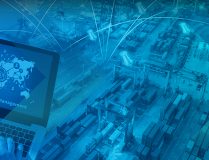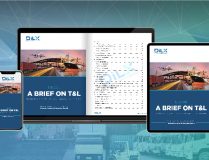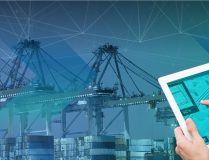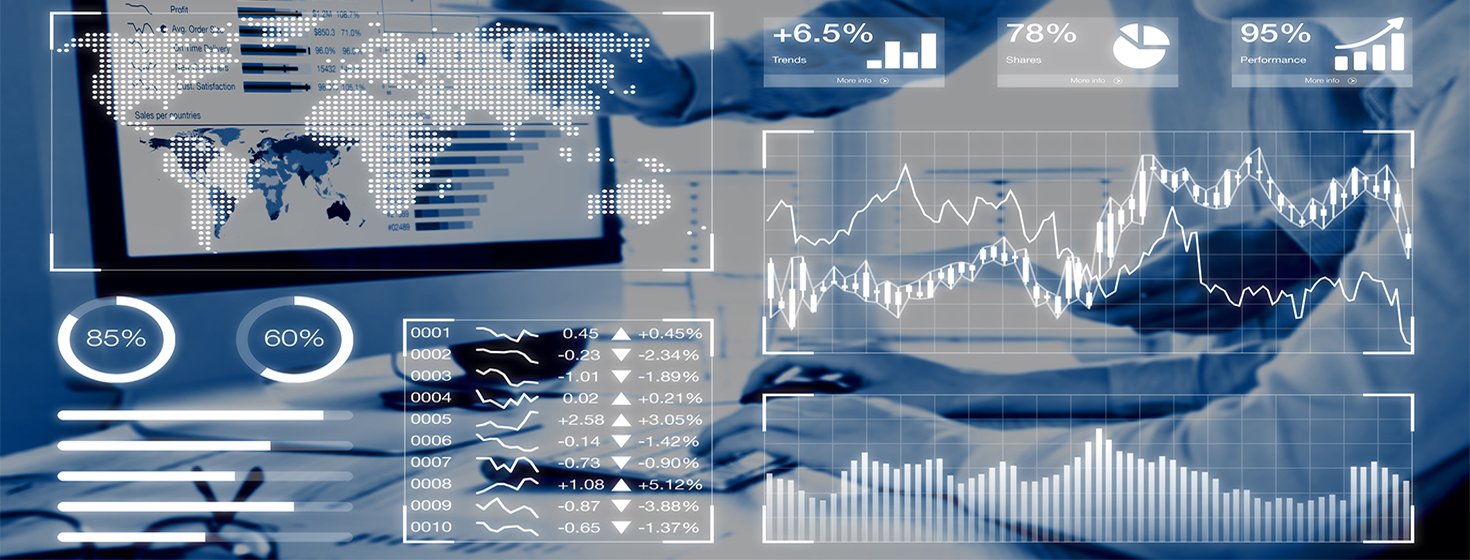Nearly everything we eat, wear and buy – from cranberries to crankshafts – moves through a supply chain. And businesses that help shepherd all those products along that chain account for an astounding 7.5% of U.S. GDP.
Because of the high costs of moving goods from point A to point B, corporations are always on the lookout to save money in addition to improving service. Emerging technology may be an answer.
Thanks to innovations in artificial intelligence and distributed ledger technology known as blockchain, augmented reality is poised to transform the software used to manage supply chains. Augmented reality, which overlays information onto the real world (think of that yellow line shown during televised football games to indicate the location of the first down marker) will now help truck drivers, warehouse workers, and management keep track of products from the second they leave the factory until the moment they arrive at your door.
Using sensors on packaging, company managers will be able to perform advanced analysis of how a company’s products are doing. In real-time, a factory can increase or decrease production based on that day’s sales at thousands of retail locations. Data scientists working on the digital supply chain can generate new insights from their products regardless of whether the shipment is sitting in the back of a delivery truck or on a distributor’s warehouse shelf. If sales are as robust as forecast, manufacturers can cut losses by making fewer products and redistributing items to where the demand is.
With over one billion AR-enabled smartphones and tablets already in use, companies don’t have to wait for low-cost augmented reality glasses to start reaping the benefits of augmented reality. Here are five ways that AR is transforming the supply chain into a nimble tool for global distribution:
1) Pick-and-Pack Services
Augmented reality is being used in warehouses to more efficiently locate products and pack them in outgoing boxes. One of the costliest parts of running a “pick and pack” service is training new workers to navigate a large warehouse and find the one product they are searching for. AR glasses can paint an imaginary line on the warehouse floor to simplify the searching and training. During the peak holiday season, temporary workers need to be on-boarded quickly. AR shortens the learning curve by providing new hires with constant feedback on their glasses about how they are doing and what can be improved. Picking and packing becomes more like a game of Pac-Man, in which workers must gather the correct items before time runs out. Field tests of AR pick-and-pack systems have reduced errors by as much as 40%. Some AR glasses can even be used to provide graphic overlays of packages on shelves, thereby minimizing the time needed to find and identify items to be picked. Once packed, the AR software can instantly provide carriers with handling instructions and anticipated shipping times.
2) Collaborative Robotics
Robots are the ultimate human augmentation. Workers sitting comfortably at their desks can wear AR glasses that let them see what a robot in the warehouse sees. AR glasses can now chart the paths of robots through warehouses and use their strength to lift and move heavy cargo. Dangerous or repetitive tasks, such as loading a truck, can be delegated to robots that operate with human guidance when it comes to how to best load the items to achieve the maximum load. Additionally, logistics robots are able to scan each product for damage, check its weight, and abide by any package shipping instructions. By connecting robots with managers, customers can be automatically alerted if any products that aren’t available before the truck even leaves the warehouse.
3) Maintenance
Fixing a problem before it happens is the most cost-effective form of maintenance. With many aircraft engines now transmitting usage data via Wi-Fi when they are on the ground, augmented reality is assisting maintenance crews in reducing engine downtime by comparing engine data with the past history of other similar aircraft with avionics systems. These algorithms then suggest maintenance before a problem is likely to occur. For planes that spend most of their ground time at distant locations, AR can also enable more experienced maintenance teams at the airline’s hub to see what local technicians are dealing with and provide timely live support.
4) Last Mile Delivery
In logistics, the last-mile of delivery to customers is the most expensive. AR can save money by cutting the time spent on last-mile delivery nearly in half. According to a DHL report, drivers spend 40% to 60% of their day searching inside their own truck for the correct boxes to deliver next. Instead of having to remember how their truck was loaded that morning, augmented reality is used to identify, tag, sequence, and locate every parcel. Combined with artificial intelligence, AR glasses can also navigate the driver to the proper door or building gate for delivery. These systems will record each and every delivery so that new drivers will benefit from past driver experiences. In the near future, every driver will be given a graphic overlay of each building they encounter.
5) Procurement
The distributed ledger capability of blockchain is being combined with augmented reality to bring transparency and traceability to procurement. The entire supply chain falls apart when customers can’t be assured of a product’s origin or authenticity. Each year, billions of dollars’ worth of counterfeit pharmaceuticals are distributed to patients, and tens of thousands are dying. Using AR to identify and track each shipment from manufacturer to end user is a way to help solve this deadly problem. Recording each transfer of ownership on a blockchain can also assist in tracing the origin of fish or the source of harvested crops.
Big data drives the decision making behind the world’s distribution of products throughout the supply chain. Augmented reality is now poised to exponentially increase the speed at which data can be analyzed and acted on. The insights augmented reality bring to the supply chain can be used to power the next generation of the supply chain, which will feature autonomous vehicles and delivery drones.
Author – JAY SAMIT
Courtesy of http://fortune.com/2018/03/01/5-ways-augmented-reality-is-disrupting-the-supply-chain/

